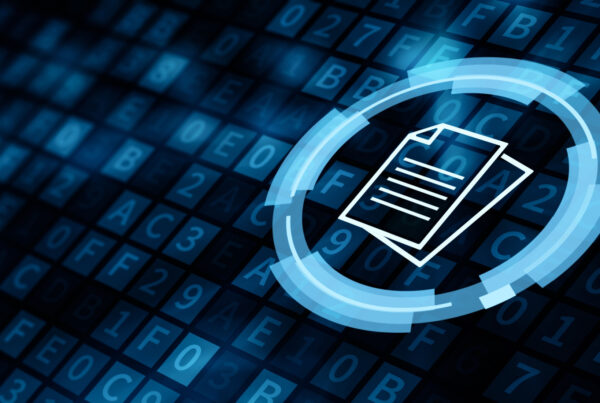Four in 10 business leaders in large enterprises (41%) believe that Artificial Intelligence [AI] will change their business model within five years, according to a recent Microsoft “Maximising the AI Opportunity” survey.
In general, the suggestion of AI will surface an image in somebodies mind of a physical robot, but this term is more and more being used to represent a software robot.
The big three Robotic Process Automation [RPA] vendors UI Path, Automation Everywhere and Blue Prism, are showing considerable revenue growth and obtaining significant financial backing suggesting an expanding market in this field.
Some established business process automation players have begun to present themselves as RPA players. We see, for example, Kofax moving up to the top right-hand corner of the Forrester Magic Quadrant. You have to question whether this widens the definition of RPA, rather than contributing to its core.
So, in accounts payable [AP], is RPA offering something new or just hype?
Start with the outcome and then think about the technology
In AP the desired outcome is timely and accurate processing of liabilities in a controlled way that ensures a business is capable of paying its suppliers on time (within agreed terms).
AP automation software has been available for some time and addresses this desired outcome by:
- Capturing the data from supplier invoices;
- Placing the data, and an image of the supplier invoice, into an automated workflow;
- Facilitating consistent account coding in the workflow;
- Ensuring consistent invoice approval in the workflow; and
- Integrating the posting of approved and coded invoices into a finance system.
This technology tends to remove the mundane data entry tasks from AP staff.
It changes their focus to value-added activities such as engaging with suppliers and internal stakeholders, dealing with exceptions, checking the quality of the capture and progressing, invoice coding, and approval.
Can RPA enhance this or replace these offerings?
Looking at the individual elements of the AP process we see:
Data entry
Most AP automation providers use a capture engine based on optical character recognition (OCR). Companies like ABBYY are using AI in their software and continually improving capture rates. So AI in this instance is already helping to improve data entry.
RPA also requires this capture phase. This provides the data into a format addressable by the software robot.
Coding
The coding operation tends to be human today. The person owning the budget ideally owns the coding of the invoices.
In relatively simple scenarios where a supplier only provides goods or services related to one account code, cost centre and department default accounts by supplier can “automatically” provide codes to invoices.
In more complex scenarios the coders can have their performance enhanced by the current AP automation offerings that prompt the likely combinations of accounts etc.
There is a potential enhancement here from AI where with significant volumes of data software can learn (machine learning) how the invoices are coded and with a high probability be correct with the posting (or at least as efficient as humans). The limit here is the volume of data required to “learn”.
Approval
In automated systems, the approval is progressed consistently to the person (or their delegate) who owns the budget. Consistent approval is ruled by an authority matrix. In some businesses, an individual invoice may need multiple approvals.
This is a vast improvement on the manual approach where AP staff have to choose the approver each time and then physically shuffle paper until the invoice comes back approved. The potential exists in the longer term for AI to be used in software to make these decisions.
Posting
Posting from AP software to a finance system is normally automated using an integration between the AP software and the finance system. Where an integration does not exist and the resource is not available to develop one, RPA could be used in its place to learn the manual data entry process of posting the invoices to the finance system.
So, in short, there is currently limited scope for RPA to enhance or improve on existing AP automation software for an SME. The exception being where there are relatively few operations (keystrokes) by an operator on a large volume of transactions. This may not be true for a large enterprise processing hundreds of thousands of transactions in exactly the same way.
Exception handling
The Microsoft survey focuses on the use of technology to augment rather than replace humans. To the extent that data accuracy can be enhanced within an organisation, exceptions arising from human error within the organisation can be reduced. Outside the organisation, suppliers will continue to make errors charging for goods and services they haven’t delivered, applying the wrong pricing to an invoice, etc.
These exceptions need to be handled.
The current automation offerings rely on human resources to resolve these issues. One of the primary benefits of automating AP is that staff have the time to focus on these rather than the bulk processing of transactions that will flow through the system without exception.
AI will, over time, be able to reduce the types of exceptions that need to be resolved by humans, but currently the start of the art is not much further than “the computer says no”. Today the rule of thumb is that people deal with people when there are problems.
Conclusion
There is a lot of hype around RPA which inevitably results in a technology trying to find a problem. There are sweet spots for RPA today but these exist primarily where there is a large volume of transactions processed using relatively few operations keystrokes. Some of these opportunities exist in AP.
It is clear that the future of AP requires business process automation, and of those solutions, the winners will be the ones that embed AI.



